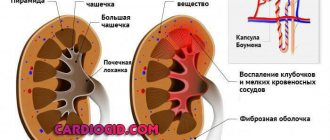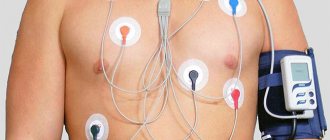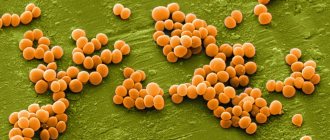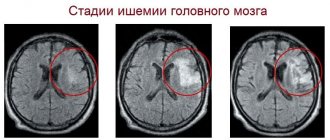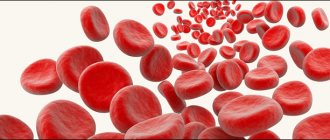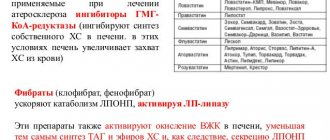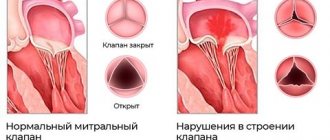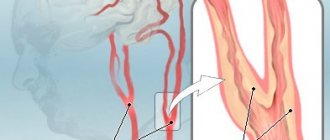Useful articles / November 10, 2020
The homa and caro indices (on the Internet you can often find the spelling “homa and caro index”) are calculated automatically when testing for insulin and glucose.
“The homa and caro index are used to determine the degree of insulin resistance, the dependence of glucose levels on insulin levels,” explains Danil Khaziev, general practitioner at the ELISA Medical Center. - Insulin resistance index - an indicator of resistance to your own insulin. When carbohydrate metabolism is disturbed, it detects a lot of glucose and insulin molecules in the blood at the same time.
Causes of insulin resistance. For what diseases should indicators be monitored?
The biomechanism of insulin resistance is not fully understood, but there are levels of “breakdown”:
- Pre-receptor - a defect in the insulin molecule.
- Receptor - the quantity and quality of insulin receptors on the cell surface decreases.
- Post-receptor - the intracellular mechanisms of insulin perception are disrupted.
“Insulin resistance can be physiological and pathological,” comments Lyubava Kazakova, general practitioner at the ELISA Medical Center. — Physiological includes insulin resistance, which occurs during a certain period of life and goes away on its own: pregnancy, adolescence, in women in the second phase of the menstrual cycle, in people on a diet enriched with fats (when the diet is canceled, the indicators return to normal). This also includes older age, when insulin resistance is common, but the condition will not be pathological with low sugar levels and normal glycated hemoglobin levels.
Pathological insulin resistance appears due to genetic defects in the insulin molecule, obesity, excess consumption of carbohydrates, certain diseases of the endocrine system (Cushing's disease, thyrotoxicosis), alcohol abuse, smoking, taking certain medications, and lack of adequate physical activity.
The diagnosis of insulin resistance is prescribed to identify insulin resistance, as well as
- Control of the course of diabetes mellitus, with gestational diabetes.
- Diagnosis of prediabetes.
- Diseases: atherosclerosis, metabolic syndrome, polycystic ovary syndrome, hepatitis C and B, fatty liver hepatosis, arterial hypertension, coronary heart disease.
- Taking certain medications.
- Infertility.
- Skin problems.
- Nervous conditions, stress, neuroses (due to the fact that stress often gets eaten up).
It is also recommended to monitor insulin resistance for women who are on various diets but cannot lose weight.
“It often happens that a woman goes on a diet, counts calories, gets carried away with fractional meals, but it’s hard to lose weight,” says Lyubava Kazakova. — You should be wary if you lose 1-2 kg in the first week of the diet, and then the weight rises and does not change for several months. In these cases, I recommend getting tested for insulin resistance, because in the vast majority of cases it will be detected. The weight will go down with the right selection of treatment, which will consist of prescribing proper nutrition in relation to insulin resistance.
Symptoms and manifestations
IR manifests itself in the form of general metabolic disorders:
- The appearance of excess weight. Abdominal obesity develops. Excess weight is concentrated mainly in the waist area. Additionally, fat is deposited on internal organs. This makes their work difficult, disrupts blood flow and can cause the development of other pathologies.
- Increased blood pressure. Accompanied by a headache in the back of the head, rapid heartbeat and excessive sweating. Even with slight physical exertion, the face turns red. In severe cases, a person suffers from attacks of dizziness and may lose consciousness.
- Fluctuations in blood sugar levels. With IR, patients feel weak, tired and irritable. There is a high risk of developing depression. Patients are thirsty and urinate more frequently. A person may wake up several times during the night to go to the toilet. Sometimes attacks of hypoglycemia occur, accompanied by weakness, trembling and panic attacks. This leads to the development of eating disorders and the emergence of the habit of overeating.
- Dermatological disorders. Sometimes acanthosis nigricans is observed: the skin on the sides, neck, armpits and under the breasts darkens, becomes rough, and may peel.
- Hormonal imbalance. Women often begin to grow dark hair in unwanted places: on the arms, legs and face. The menstrual cycle is disrupted.
Increased blood pressure is a sign of metabolic disorders.
Diagnosis of insulin resistance. What tests should I take?
To identify insulin resistance, it is enough to take tests:
- Glucose.
- Insulin + homa and caro indices.
- Glycosylated hemoglobin.
- C-peptide.
“Many patients are accidentally diagnosed with insulin resistance during testing,” explains Danil Khaziev. “This is mainly due to widespread physical inactivity, excess food consumption, and, as a consequence, excess body weight. If you are overweight, the risk of insulin resistance increases.
Proper physical activity
To effectively increase insulin sensitivity, the following types of exercise are preferred:
- Power. The load should be short but intense. It helps reduce glycogen stores in the liver and muscles and prepares storage space for sugar.
- Walks. In the process of walking, the body no longer burns sugar, but fats.
- Swimming. Similar to walking. This sport is preferable for obese people, since the load on the legs is reduced in water.
It is advisable to switch to a more active lifestyle. Cycling is encouraged. It is recommended to exercise during the day. Even circling around the room makes it easier for sugar to enter the cells.
Treatment of insulin resistance
Timely identified insulin resistance is a reversible condition.
- Treatment can be non-drug: lifestyle correction (therapeutic diet, but not for 2-3 weeks, but a complete change in eating habits for life), weight loss, physical exercise (from gym classes to cycling and regular regular walking) and medicinal (drugs biguanides and thiazolidinediones (glitazones), explains Lyubava Kazakova. “As for taking tablet drugs, everything is individual. For some, a month of taking it is enough, for others – longer. But it all comes down to maintaining a new image life will always have to.
Detection of insulin resistance often becomes an accidental finding for the reason that the tests required for this analysis are not included in the compulsory medical insurance and are not screening tests. And a glucose test alone is not enough to identify the problem. Therefore, pay close attention to your well-being, and in case of complaints, consult a therapist. He will prescribe a set of studies that will be able to fully assess the risk of prediabetes and insulin resistance.
What can you drink
The following drinks are allowed to be consumed during IR:
- mineral water;
- cocoa without sugar;
- coffee in limited quantities, no more than 2-3 small cups per day;
- jelly with oatmeal;
- compote;
- kvass;
- tea;
- milk.
In case of IR, it is allowed to drink mineral water.
Comments from nutritionists
Anastasia, 48 years old, Chelyabinsk The menu has a lot of products and dishes, there are few restrictions, it’s easy to follow the rules.
The main advantage: the diet does not require fasting. Even when the urge is weak, you can find a low-calorie snack. The only inconvenience is associated with giving up fast carbohydrates. Some patients do not tolerate restrictions well in the initial stages. You can cope with this by gradually eliminating dangerous products. Sweets can be replaced with dried fruits and honey, but portions must be limited. Olga, 35 years old, Omsk It would be more correct to call this system not a diet, but a healthy diet. Patients should adhere to it throughout their lives. It is strongly recommended not to limit yourself to diet, but to visit a doctor and be observed by him. Each patient needs to create an individual diet, since everyone’s reaction to foods is different. For example, some people tolerate honey and grapes well, while others experience increased glucose levels even after eating whole grain cereals and legumes.
Complexes with this research
Advanced male anti-aging diagnostics Advanced monitoring of key indicators in men aged 40+ 33,710 ₽ Composition
Anti-aging diagnostics in postmenopause Monitoring age-related changes during the postmenopausal period 12,630 ₽ Composition
Advanced women's anti-aging diagnostics Advanced monitoring of basic blood parameters in women aged 40+ RUB 28,680 Composition
IN OTHER COMPLEXES
- Diabetes monitoring RUB 1,900
- Male anti-aging diagnostics RUB 13,300
- Women's anti-aging diagnostics RUB 12,070
- Advanced anti-aging diagnostics in postmenopause RUB 29,230
Among the functions of insulin, the 2 most interesting to us are:
- The supply of excess energy that we get from food - in response to food intake, we receive the so-called “insulin response”, and to varying degrees, but for all three macroelements - not only proteins, but also fats and carbohydrates
- Some experts call this function anti-catabolic, its essence is preventing our breakdown - retaining energy in the body in the form of muscle and fat tissue (an excellent illustration of this function is type 1 diabetes, in which insulin is NOT produced; before the invention of insulin, patients died due to physical exhaustion - inability to retain fat and muscle tissue)
Consequences of not dieting
The list of possible consequences includes:
- atherosclerosis;
- stroke;
- heart attack;
- hyperglycemia;
- type 2 diabetes.
Atherosclerosis can be a consequence of not dieting.
If the diet is not followed, the functioning of the pancreas is disrupted, it becomes difficult for the body to absorb nutrients, and the gastrointestinal tract often becomes inflamed.
Liver damage occurs and fatty degeneration develops. In the absence of treatment, several diseases of the gastrointestinal tract, cardiovascular and immune systems develop at once, which makes it more difficult to stabilize the patient’s condition.
Fully or partially limited products
- White bread, sweet baked goods, sugar, mashed potatoes, fried potatoes (baked potatoes are allowed, but very rarely), chips, sweet yogurt, sweet fruits, pastries, waffles, donuts, sweet juices, corn flakes and popcorn, cakes, drinks with added sugar, pearl barley, millet, semolina and other crushed cereals, sweets, beer, boiled carrots and beets.
- Due to the high starch content, all dishes using starch, watermelon, pumpkin, zucchini, rice noodles, beer, products with cream, preserves, jams, cakes, lemonades, sweet cheeses and desserts, ice cream, semolina, white rice.
- Fatty meats and broths, sausages, cream-based sauces, smoked foods, fatty fried foods, canned food.
- Spicy foods, hot sauces and marinades, excessive amounts of seasonings that stimulate the appetite.
- Limit salt intake.
Table of prohibited products
| Proteins, g | Fats, g | Carbohydrates, g | Calories, kcal | |
Vegetables and greens | ||||
| boiled carrots | 0,8 | 0,3 | 5,0 | 25 |
| boiled beets | 1,8 | 0,0 | 10,8 | 49 |
| pumpkin | 1,3 | 0,3 | 7,7 | 28 |
| horseradish | 3,2 | 0,4 | 10,5 | 56 |
Fruits | ||||
| apricots | 0,9 | 0,1 | 10,8 | 41 |
| pineapples | 0,4 | 0,2 | 10,6 | 49 |
| watermelon | 0,6 | 0,1 | 5,8 | 25 |
| bananas | 1,5 | 0,2 | 21,8 | 95 |
| melon | 0,6 | 0,3 | 7,4 | 33 |
| mango | 0,5 | 0,3 | 11,5 | 67 |
| nectarine | 0,9 | 0,2 | 11,8 | 48 |
| peaches | 0,9 | 0,1 | 11,3 | 46 |
Berries | ||||
| grape | 0,6 | 0,2 | 16,8 | 65 |
Nuts and dried fruits | ||||
| raisin | 2,9 | 0,6 | 66,0 | 264 |
| dried figs | 3,1 | 0,8 | 57,9 | 257 |
| dates | 2,5 | 0,5 | 69,2 | 274 |
Cereals and porridges | ||||
| semolina | 10,3 | 1,0 | 73,3 | 328 |
| corn grits | 8,3 | 1,2 | 75,0 | 337 |
| pearl barley | 9,3 | 1,1 | 73,7 | 320 |
| millet cereal | 11,5 | 3,3 | 69,3 | 348 |
Flour and pasta | ||||
| pasta | 10,4 | 1,1 | 69,7 | 337 |
| noodles | 12,0 | 3,7 | 60,1 | 322 |
Bakery products | ||||
| wheat bread | 8,1 | 1,0 | 48,8 | 242 |
Confectionery | ||||
| jam | 0,3 | 0,2 | 63,0 | 263 |
| candies | 4,3 | 19,8 | 67,5 | 453 |
| pastry cream | 0,2 | 26,0 | 16,5 | 300 |
Ice cream | ||||
| ice cream | 3,7 | 6,9 | 22,1 | 189 |
Raw materials and seasonings | ||||
| mustard | 5,7 | 6,4 | 22,0 | 162 |
| mayonnaise | 2,4 | 67,0 | 3,9 | 627 |
| honey | 0,8 | 0,0 | 81,5 | 329 |
| sugar | 0,0 | 0,0 | 99,7 | 398 |
Dairy | ||||
| baked milk | 3,0 | 6,0 | 4,7 | 84 |
| cream | 2,8 | 20,0 | 3,7 | 205 |
| sour cream 25% (classic) | 2,6 | 25,0 | 2,5 | 248 |
| sour cream 30% | 2,4 | 30,0 | 3,1 | 294 |
| Ryazhenka 6% | 5,0 | 6,0 | 4,1 | 84 |
Cheeses and cottage cheese | ||||
| glazed cheese | 8,5 | 27,8 | 32,0 | 407 |
| curd | 7,1 | 23,0 | 27,5 | 341 |
Meat products | ||||
| pork | 16,0 | 21,6 | 0,0 | 259 |
| salo | 2,4 | 89,0 | 0,0 | 797 |
Bird | ||||
| smoked chicken | 27,5 | 8,2 | 0,0 | 184 |
| duck | 16,5 | 61,2 | 0,0 | 346 |
| smoked duck | 19,0 | 28,4 | 0,0 | 337 |
| goose | 16,1 | 33,3 | 0,0 | 364 |
Fish and seafood | ||||
| smoked fish | 26,8 | 9,9 | 0,0 | 196 |
| canned fish | 17,5 | 2,0 | 0,0 | 88 |
| sardine in oil | 24,1 | 13,9 | — | 221 |
| cod (liver in oil) | 4,2 | 65,7 | 1,2 | 613 |
Oils and fats | ||||
| butter | 0,5 | 82,5 | 0,8 | 748 |
| animal fat | 0,0 | 99,7 | 0,0 | 897 |
| cooking fat | 0,0 | 99,7 | 0,0 | 897 |
Non-alcoholic drinks | ||||
| lemonade | 0,0 | 0,0 | 6,4 | 26 |
| Pepsi | 0,0 | 0,0 | 8,7 | 38 |
| Fanta | 0,0 | 0,0 | 11,7 | 48 |
Juices and compotes | ||||
| apricot juice | 0,9 | 0,1 | 9,0 | 38 |
| grape juice | 0,3 | 0,0 | 14,0 | 54 |
| pumpkin juice | 0,0 | 0,0 | 9,0 | 38 |
| * data is per 100 g of product | ||||
